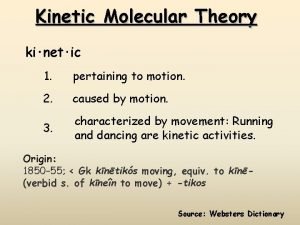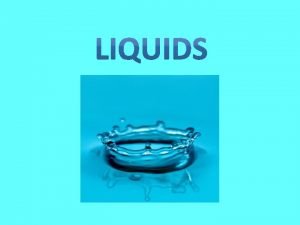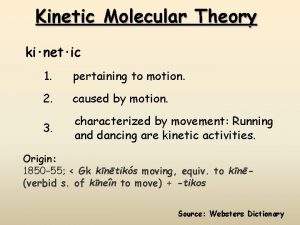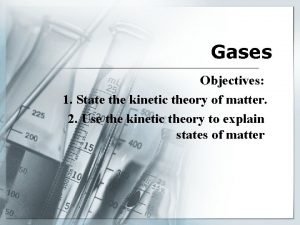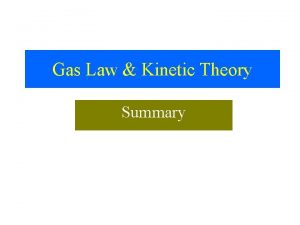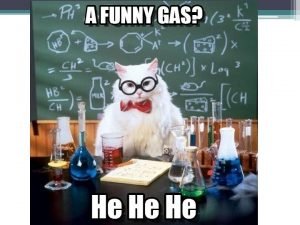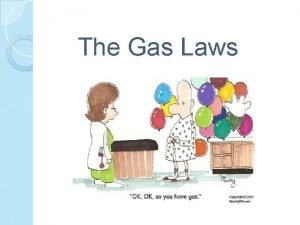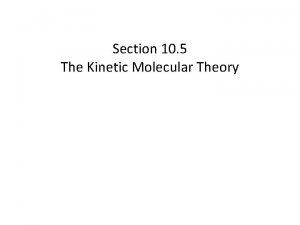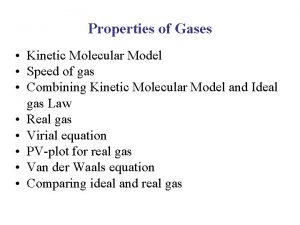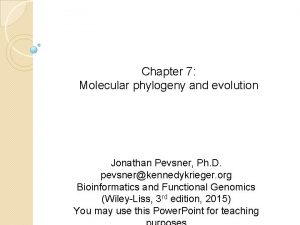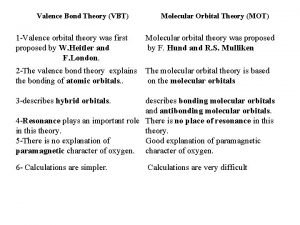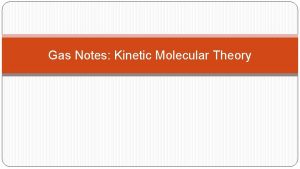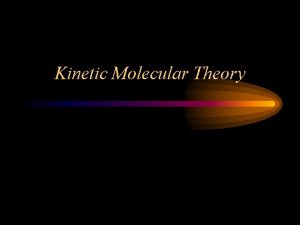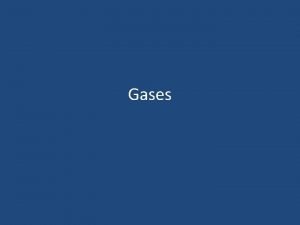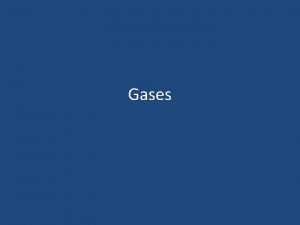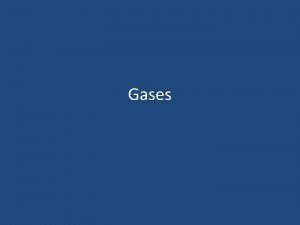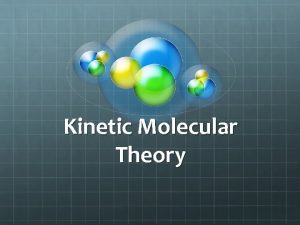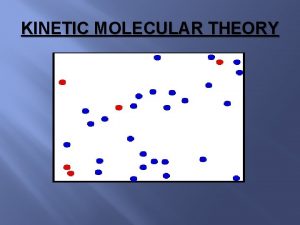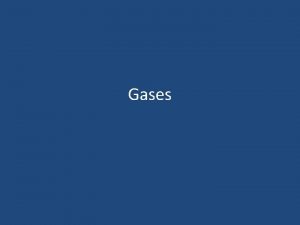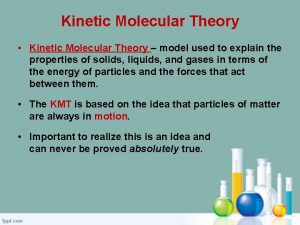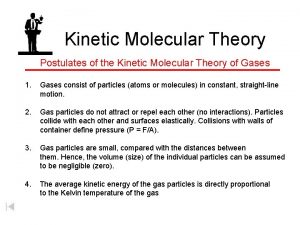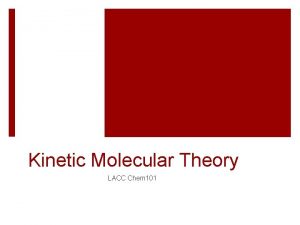Chapter 13 Notes Kinetic Molecular Theory Kinetic Theory



















- Slides: 19

Chapter 13 Notes Kinetic Molecular Theory

Kinetic Theory and Gases • Kinetic Energy—Energy that an object has due to motion. • The Kinetic Theory states: Tiny particles form all matter, and they are constantly in motion.

Kinetic Theory and Gases 1) A gas is composed of particles that are small, hard spheres with insignificant volume and no particle interaction.

Kinetic Theory and Gases 2) Particles in a gas are in constant motion—they travel straight paths unless they collide with another particle or their container.

Kinetic Theory and Gases 3) All collisions are considered elastic— no energy is lost to friction.

Kinetic Theory and Gases 4. ) No kinetic energy is lost when particles collide gas – elastic collisions occur w/ other gas particles or with the wall of the container – energy can be transferred in collision but the total kinetic energy of the 2 particles does not change

Kinetic Theory and Gases 5. ) All gases have same average kinetic energy at the same temperature • kinetic energy of motion (molecules are always moving) • Temperature is a measure of the average kinetic energy of the particles in a sample of matter (at a given temp. , all gases have the same avg. KE)

Temperature ↓ in temp = ↓ in K. E. (molecules slow down) Theoretically, if you could lower the temp enough motion would cease This temperature is called Absolute Zero

Gas Pressure • Kinetic theory explains the existence of gas pressure. • Gas pressure—the force exerted by a gas per unit surface area.

Gas Pressure • The force of one molecule hitting an object is relatively small, but the result of billions of particles of air hitting a surface at once is significant.

Gas Pressure pressure = force / unit area To increase pressure (force/area): 1. more particles per unit area a. decrease volume of container (↓ area) b. add more particles 2. increase temp: ↑ speed of particles causing ↑ collisions

What happens as you increase altitude (climb a mountain)? Gravity pulls air particles in toward earth. The air at higher altitudes has less air above pushing down and fewer air molecules in a given space. Atmospheric pressure decreases as you gain altitude. Pilots gauge their altitude by measuring pressure.

What happens as you increase altitude (climb a mountain)?

Atmospheric Pressure A barometer measures atmospheric pressure. The SI unit for pressure is the pascal (Pa). Atmospheric pressure at sea level is about 101. 3 kilopascals (k. Pa). Other units of measurement are atmospheres (atm), mm Hg, and pounds per square inch (psi). 1 atm = 101. 3 k. Pa = 760 mm Hg = 14. 7 psi

Comparison of Pressure Units of Pressure 1 atm = the average atmospheric pressure at sea level kilopascal Torricelli mm mercury inches mercury pounds / in 2 1 atm = 101. 3 k. Pa 1 atm = 760 torr 1 atm = 760 mm Hg 1 atm = 29. 9 in Hg 1 atm = 14. 7 psi

Pressure conversion problems 1. Convert 190 mm Hg to atm 2. The pressure at the top of Mt Everest is 4. 89 psi. How many mm of Hg is this? in. of Hg? How many atm?

What is an absence of particles called? • A vacuum! • No particles = no pressure • Atmospheric pressure is the amount of pressure from the particles in the atmosphere colliding with objects.

STP = Standard Temperature and Pressure Since temperature and air pressure may vary form place to place it is necessary to have standard reference conditions for testing purposes STP is commonly used to define standard conditions for temperature and pressure 0 o. C or 273 K and 1 atm or 760 mm

 Kinetic molecular theory of solids
Kinetic molecular theory of solids Kinetic molecular model of gases
Kinetic molecular model of gases Kinetic molecular theory volume
Kinetic molecular theory volume Adhesive force
Adhesive force Kinetic molecular theory of liquids
Kinetic molecular theory of liquids Kinetic molecular theory
Kinetic molecular theory Kinetic theory def
Kinetic theory def Timeline of kinetic molecular theory
Timeline of kinetic molecular theory Charles law in terms of kinetic molecular theory
Charles law in terms of kinetic molecular theory Postulates of kinetic theory
Postulates of kinetic theory Kinetic molecular theory
Kinetic molecular theory Kinetic molecular theory
Kinetic molecular theory Equation of state of real gas
Equation of state of real gas Kinetic molecular theory
Kinetic molecular theory Tenets of kinetic molecular theory
Tenets of kinetic molecular theory Neutral theory of molecular evolution notes
Neutral theory of molecular evolution notes Covalently bonded substances
Covalently bonded substances Ionic covalent metallic
Ionic covalent metallic Zinc oxide + nitric acid → zinc nitrate + water
Zinc oxide + nitric acid → zinc nitrate + water Valence bond theory vbt
Valence bond theory vbt


